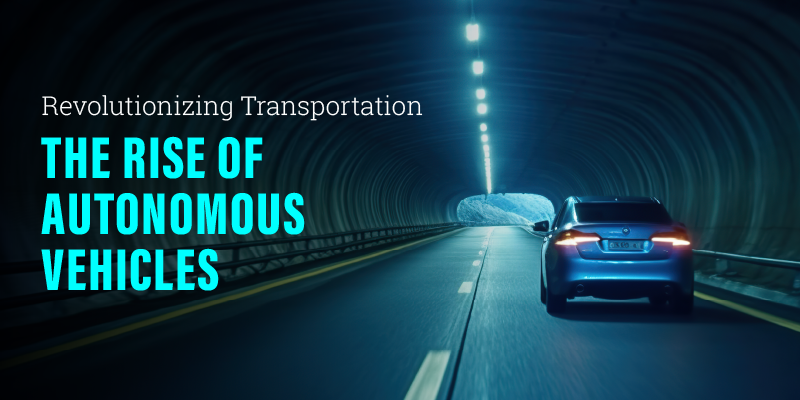Introduction: The Evolution of Autonomous Vehicles
Autonomous vehicles (AVs) are no longer a futuristic concept confined to the pages of science fiction. Over the past decade, significant advancements in artificial intelligence, sensor technology, and machine learning have brought the dream of self-driving cars closer to reality. From tech giants like Google and Tesla to traditional automakers such as Ford and General Motors, companies across the globe are investing heavily in the development and deployment of AVs. As these vehicles transition from testing phases to real-world applications, the implications for smart mobility are profound and far-reaching.
The Technology Behind Autonomous Vehicles
At the heart of autonomous vehicles, https://genztech.online/ lies a sophisticated blend of sensors, cameras, radar, and lidar systems, all working in tandem to perceive the environment in real-time. These vehicles rely on complex algorithms and AI-driven software to process the vast amounts of data collected, enabling them to make decisions, navigate roads, and avoid obstacles with precision. The continuous improvement of these technologies is crucial, as AVs must be able to operate safely in a wide range of conditions, from urban traffic to rural landscapes, in all weather scenarios.

The Benefits of Autonomous Vehicles
One of the most significant promises of autonomous vehicles is the potential to enhance road safety. Human error is responsible for the majority of traffic accidents, and AVs, with their ability to react faster and more accurately than humans, could drastically reduce the number of collisions. Additionally, autonomous vehicles have the potential to improve traffic flow and reduce congestion through better coordination and communication between vehicles, optimizing routes, and reducing the overall number of vehicles on the road.
Environmental benefits are also a key factor driving the adoption of AVs. Many autonomous vehicles are being designed as electric vehicles (EVs), contributing to a reduction in greenhouse gas emissions and dependence on fossil fuels. The combination of autonomous driving and electric powertrains could lead to a more sustainable transportation system, aligning with global efforts to combat climate change.
Challenges and Barriers to Adoption
Despite the potential benefits, several challenges remain before autonomous vehicles can be fully integrated into the mainstream. One of the primary concerns is the technology’s safety and reliability. While AVs have shown impressive performance in controlled environments, achieving the same level of safety in unpredictable, real-world conditions is more complex. High-profile accidents involving self-driving cars have raised concerns about their readiness for widespread use.
Regulatory and legal frameworks also pose significant challenges. Governments and regulatory bodies worldwide are grappling with how to legislate and oversee the deployment of autonomous vehicles. Issues such as liability in the event of an accident, data privacy, and cybersecurity are all critical factors that need to be addressed. The lack of a unified global standard for AVs further complicates the process, as different countries adopt varying approaches to regulation.
Public acceptance is another hurdle. While there is excitement around the potential of autonomous vehicles, there is also apprehension. Many people are still uncomfortable with the idea of relinquishing control to a machine and gaining public trust will be essential for widespread adoption.

The Impact on Smart Mobility
The rise of autonomous vehicles is poised to transform the concept of smart mobility. Cities around the world are already rethinking urban planning and infrastructure to accommodate this new wave of transportation technology. Smart cities, equipped with IoT devices and connected infrastructure, will be essential to support the seamless integration of AVs into daily life.
Autonomous vehicles could also revolutionize public transportation. Imagine a fleet of self-driving buses or shuttles that can be summoned on demand, offering flexible and efficient transport options that adapt to the needs of users in real time. This could significantly reduce the need for private car ownership, leading to less traffic congestion, lower emissions, and more accessible mobility options for all citizens.
Moreover, AVs could play a pivotal role in addressing the first and last-mile problems in transportation. By providing efficient, autonomous solutions for short trips, AVs could bridge the gap between public transit hubs and final destinations, making the overall transportation system more cohesive and user-friendly.
The Future of Autonomous Vehicles and Smart Mobility
As autonomous vehicle technology continues to evolve, the future of smart mobility looks increasingly interconnected and efficient. The widespread adoption of AVs will require collaboration between tech companies, automakers, governments, and urban planners to create a transportation ecosystem that is safe, sustainable, and inclusive.
While the road to full autonomy may still have obstacles, the progress made so far suggests that the integration of autonomous vehicles into our daily lives is not a question of if, but when. As we look ahead, the rise of autonomous vehicles promises to redefine how we think about transportation, paving the way for a smarter, safer, and more sustainable future.
Conclusion: Embracing the Change
The journey towards autonomous vehicles is both exciting and challenging. While there are still many hurdles to overcome, the potential benefits for society are immense. By addressing the technological, regulatory, and societal challenges head-on, we can unlock the full potential of autonomous vehicles and usher in a new era of smart mobility that benefits everyone. As we embrace this change, the promise of a future where transportation is safer, cleaner, and more efficient is within our grasp.
